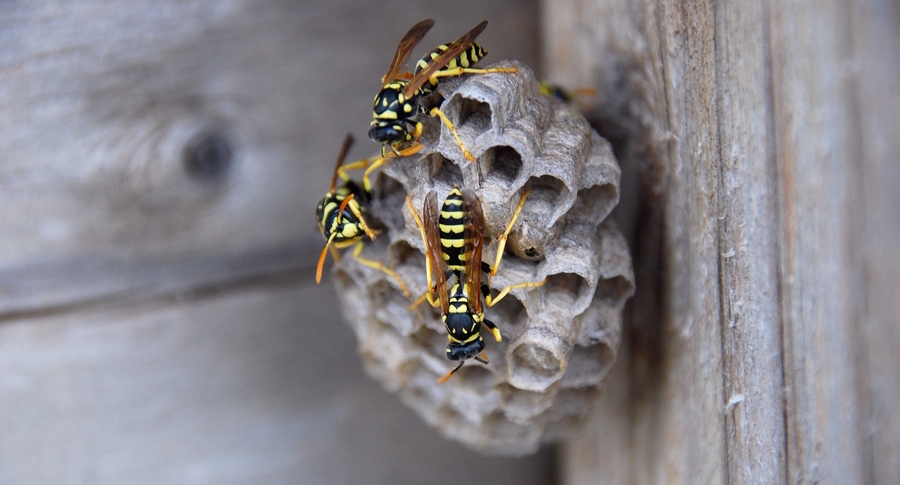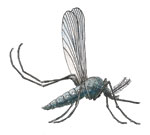READY TO GET STARTED?
REQUEST A FREE ESTIMATE
Fill out the form below or call (888) 466-7849 for a free, no-obligation estimate.

[vc_row css=”.vc_custom_1461783466399{margin-bottom: 20px !important;}”][vc_column][vc_column_text]
Now that we’re well into the Spring season, you may be noticing an influx of pests that were hiding out over the winter – mosquitoes, ants, termites, and BEES. While some bees you’ll encounter are harmless, others can seem threatening and leave behind painful stings and cause allergic reactions. Here’s a list of common bees in the South to be on the lookout during the Spring and Summer seasons, with bee control tips:
[/vc_column_text][/vc_column][/vc_row][vc_row css=”.vc_custom_1461783788041{margin-bottom: 20px !important;}”][vc_column][vc_row_inner][vc_column_inner][ctitle title=”Carpenter Bees” uppercase=”no” background=”#ffffff” font_size=”26″ position=”left” separator_color=”#ffffff”][/vc_column_inner][/vc_row_inner][vc_separator style=”blank” padding_top=”5″ padding_bottom=”5″][vc_row_inner][vc_column_inner width=”1/3″][vc_single_image image=”15376″ img_size=”300×155″ style=”vc_box_outline” img_link_target=”_blank” link=”https://www.callnorthwest.com/identify-pest/bees/carpenter-bees/”][/vc_column_inner][vc_column_inner width=”2/3″][vc_column_text]
Carpenter bees are large black and yellow bees, often mistaken for bumble bees. You’re likely to see them in the Spring hovering around the eaves of your house or under and around decks and porches. Carpenter bees can cause damage to structures by creating small, circular holes as entry points into nests with multiple tunnels, leaving behind trails of sawdust. Any area of exposed wood can be a target for carpenter bee nests. The good news: carpenter bees rarely sting unless bothered; males do not have a stinger but can become aggressive towards other bees, animals or people near their nest and females usually only sting when extremely agitated. You can also prevent carpenter bees from nesting by treating or painting any exposed wood. If you’re already seeing carpenter bee nests, each nest hole should be treated with a pesticide if bees are inside the nest. If no bees are in the nest, seal or paint entry holes. For best results, call a pest control company that specializes in bee control and removal.
[/vc_column_text][/vc_column_inner][/vc_row_inner][/vc_column][/vc_row][vc_row css=”.vc_custom_1461783795963{margin-bottom: 20px !important;}”][vc_column][vc_row_inner][vc_column_inner][ctitle title=”Cicada Killer Bees” uppercase=”no” background=”#ffffff” font_size=”26″ position=”left” separator_color=”#ffffff”][/vc_column_inner][/vc_row_inner][vc_separator style=”blank” padding_top=”5″ padding_bottom=”5″][vc_row_inner][vc_column_inner width=”1/3″][vc_single_image image=”15377″ img_size=”300×155″ style=”vc_box_outline” img_link_target=”_blank” link=”https://www.callnorthwest.com/identify-pest/bees/cicada-killer-bees/”][/vc_column_inner][vc_column_inner width=”2/3″][vc_column_text]
Cicada killer bees are large bees, black or rusty-colored with yellow markings, that resemble a larger version of a yellow jacket. Unlike a lot of other bee species, cicada killer bees do not live in colonies and prefer to nest underground in areas of bare ground. Female cicada killer bees dig burrows 1/2″ in diameter that can extend up to 10″ deep which can cause significant lawn damage. You’re likely to encounter cicada killer bees in the Summer – usually July and August – when they emerge from burrows.
[/vc_column_text][/vc_column_inner][/vc_row_inner][/vc_column][/vc_row][vc_row css=”.vc_custom_1461783803707{margin-bottom: 20px !important;}”][vc_column][vc_row_inner][vc_column_inner][ctitle title=”Bumble Bees” uppercase=”no” background=”#ffffff” font_size=”26″ position=”left” separator_color=”#ffffff”][/vc_column_inner][/vc_row_inner][vc_separator style=”blank” padding_top=”5″ padding_bottom=”5″][vc_row_inner][vc_column_inner width=”1/3″][vc_single_image image=”15378″ img_size=”300×155″ style=”vc_box_outline”][/vc_column_inner][vc_column_inner width=”2/3″][vc_column_text]
While relatively harmless bees, bumble bees – identified by their fuzzy, black and yellow-striped appearance and a buzzing sound while flying – can become aggressive and sting if their nest is threatened. They’re normally seen in flowering plants and typically don’t nest in structures.
[/vc_column_text][/vc_column_inner][/vc_row_inner][/vc_column][/vc_row][vc_row css=”.vc_custom_1461783813281{margin-bottom: 20px !important;}”][vc_column][vc_row_inner][vc_column_inner][ctitle title=”Yellow Jackets” uppercase=”no” background=”#ffffff” font_size=”26″ position=”left” separator_color=”#ffffff”][/vc_column_inner][/vc_row_inner][vc_separator style=”blank” padding_top=”5″ padding_bottom=”5″][vc_row_inner][vc_column_inner width=”1/3″][vc_single_image image=”15379″ img_size=”300×155″ style=”vc_box_outline”][/vc_column_inner][vc_column_inner width=”2/3″][vc_column_text]
Yellow jackets are one of the most commonly encountered bees and also one of the most aggressive. Their stings can be extremely painful and cause severe allergic reactions for some. Yellow jackets are also know to sting repeatedly. Avoiding yellow jackets is the best method of sting prevention or remain still if you encounter them; swatting or sudden movements can cause them to attack.
[/vc_column_text][/vc_column_inner][/vc_row_inner][/vc_column][/vc_row][vc_row css=”.vc_custom_1461783821501{margin-bottom: 20px !important;}”][vc_column][vc_row_inner][vc_column_inner][ctitle title=”Paper Wasps” uppercase=”no” background=”#ffffff” font_size=”26″ position=”left” separator_color=”#ffffff”][/vc_column_inner][/vc_row_inner][vc_separator style=”blank” padding_top=”5″ padding_bottom=”5″][vc_row_inner][vc_column_inner width=”1/3″][vc_single_image image=”15381″ img_size=”300×155″ style=”vc_box_outline”][/vc_column_inner][vc_column_inner width=”2/3″][vc_column_text]
Paper wasps are large, aggressive wasps that cause painful bites and sometimes severe allergic reactions. They’re most likely to sting if their nest is threatened or disturbed. It’s recommended to contact an exterminating company for wasp nest removal.
[/vc_column_text][/vc_column_inner][/vc_row_inner][/vc_column][/vc_row][vc_row css=”.vc_custom_1461783548104{margin-bottom: 40px !important;}”][vc_column][vc_row_inner][vc_column_inner][ctitle title=”Hornets” uppercase=”no” background=”#ffffff” font_size=”26″ position=”left” separator_color=”#ffffff”][/vc_column_inner][/vc_row_inner][vc_separator style=”blank” padding_top=”5″ padding_bottom=”5″][vc_row_inner][vc_column_inner width=”1/3″][vc_single_image image=”15382″ img_size=”300×155″ style=”vc_box_outline”][/vc_column_inner][vc_column_inner width=”2/3″][vc_column_text]
Hornets are brown and yellow striped with reddish colored wings, and sometime mistaken for cicada killer bees. They build above-ground nests, usually in trees, and are active in the Spring. It’s recommended that you contact a pest control company to remove a hornet nest, but they do not pose a serious threat to humans and will die or hibernate in the Fall.
[/vc_column_text][/vc_column_inner][/vc_row_inner][/vc_column][/vc_row]

[vc_row css=”.vc_custom_1461783466399{margin-bottom: 20px !important;}”][vc_column][vc_column_text]
Now that we’re well into the Spring season, you may be noticing an influx of pests that were hiding out over the winter – mosquitoes, ants, termites, and BEES. While some bees you’ll encounter are harmless, others can seem threatening and leave behind painful stings and cause allergic reactions. Here’s a list of common bees in the South to be on the lookout during the Spring and Summer seasons, with bee control tips:
[/vc_column_text][/vc_column][/vc_row][vc_row css=”.vc_custom_1461783788041{margin-bottom: 20px !important;}”][vc_column][vc_row_inner][vc_column_inner][ctitle title=”Carpenter Bees” uppercase=”no” background=”#ffffff” font_size=”26″ position=”left” separator_color=”#ffffff”][/vc_column_inner][/vc_row_inner][vc_separator style=”blank” padding_top=”5″ padding_bottom=”5″][vc_row_inner][vc_column_inner width=”1/3″][vc_single_image image=”15376″ img_size=”300×155″ style=”vc_box_outline” img_link_target=”_blank” link=”https://www.callnorthwest.com/identify-pest/bees/carpenter-bees/”][/vc_column_inner][vc_column_inner width=”2/3″][vc_column_text]
Carpenter bees are large black and yellow bees, often mistaken for bumble bees. You’re likely to see them in the Spring hovering around the eaves of your house or under and around decks and porches. Carpenter bees can cause damage to structures by creating small, circular holes as entry points into nests with multiple tunnels, leaving behind trails of sawdust. Any area of exposed wood can be a target for carpenter bee nests. The good news: carpenter bees rarely sting unless bothered; males do not have a stinger but can become aggressive towards other bees, animals or people near their nest and females usually only sting when extremely agitated. You can also prevent carpenter bees from nesting by treating or painting any exposed wood. If you’re already seeing carpenter bee nests, each nest hole should be treated with a pesticide if bees are inside the nest. If no bees are in the nest, seal or paint entry holes. For best results, call a pest control company that specializes in bee control and removal.
[/vc_column_text][/vc_column_inner][/vc_row_inner][/vc_column][/vc_row][vc_row css=”.vc_custom_1461783795963{margin-bottom: 20px !important;}”][vc_column][vc_row_inner][vc_column_inner][ctitle title=”Cicada Killer Bees” uppercase=”no” background=”#ffffff” font_size=”26″ position=”left” separator_color=”#ffffff”][/vc_column_inner][/vc_row_inner][vc_separator style=”blank” padding_top=”5″ padding_bottom=”5″][vc_row_inner][vc_column_inner width=”1/3″][vc_single_image image=”15377″ img_size=”300×155″ style=”vc_box_outline” img_link_target=”_blank” link=”https://www.callnorthwest.com/identify-pest/bees/cicada-killer-bees/”][/vc_column_inner][vc_column_inner width=”2/3″][vc_column_text]
Cicada killer bees are large bees, black or rusty-colored with yellow markings, that resemble a larger version of a yellow jacket. Unlike a lot of other bee species, cicada killer bees do not live in colonies and prefer to nest underground in areas of bare ground. Female cicada killer bees dig burrows 1/2″ in diameter that can extend up to 10″ deep which can cause significant lawn damage. You’re likely to encounter cicada killer bees in the Summer – usually July and August – when they emerge from burrows.
[/vc_column_text][/vc_column_inner][/vc_row_inner][/vc_column][/vc_row][vc_row css=”.vc_custom_1461783803707{margin-bottom: 20px !important;}”][vc_column][vc_row_inner][vc_column_inner][ctitle title=”Bumble Bees” uppercase=”no” background=”#ffffff” font_size=”26″ position=”left” separator_color=”#ffffff”][/vc_column_inner][/vc_row_inner][vc_separator style=”blank” padding_top=”5″ padding_bottom=”5″][vc_row_inner][vc_column_inner width=”1/3″][vc_single_image image=”15378″ img_size=”300×155″ style=”vc_box_outline”][/vc_column_inner][vc_column_inner width=”2/3″][vc_column_text]
While relatively harmless bees, bumble bees – identified by their fuzzy, black and yellow-striped appearance and a buzzing sound while flying – can become aggressive and sting if their nest is threatened. They’re normally seen in flowering plants and typically don’t nest in structures.
[/vc_column_text][/vc_column_inner][/vc_row_inner][/vc_column][/vc_row][vc_row css=”.vc_custom_1461783813281{margin-bottom: 20px !important;}”][vc_column][vc_row_inner][vc_column_inner][ctitle title=”Yellow Jackets” uppercase=”no” background=”#ffffff” font_size=”26″ position=”left” separator_color=”#ffffff”][/vc_column_inner][/vc_row_inner][vc_separator style=”blank” padding_top=”5″ padding_bottom=”5″][vc_row_inner][vc_column_inner width=”1/3″][vc_single_image image=”15379″ img_size=”300×155″ style=”vc_box_outline”][/vc_column_inner][vc_column_inner width=”2/3″][vc_column_text]
Yellow jackets are one of the most commonly encountered bees and also one of the most aggressive. Their stings can be extremely painful and cause severe allergic reactions for some. Yellow jackets are also know to sting repeatedly. Avoiding yellow jackets is the best method of sting prevention or remain still if you encounter them; swatting or sudden movements can cause them to attack.
[/vc_column_text][/vc_column_inner][/vc_row_inner][/vc_column][/vc_row][vc_row css=”.vc_custom_1461783821501{margin-bottom: 20px !important;}”][vc_column][vc_row_inner][vc_column_inner][ctitle title=”Paper Wasps” uppercase=”no” background=”#ffffff” font_size=”26″ position=”left” separator_color=”#ffffff”][/vc_column_inner][/vc_row_inner][vc_separator style=”blank” padding_top=”5″ padding_bottom=”5″][vc_row_inner][vc_column_inner width=”1/3″][vc_single_image image=”15381″ img_size=”300×155″ style=”vc_box_outline”][/vc_column_inner][vc_column_inner width=”2/3″][vc_column_text]
Paper wasps are large, aggressive wasps that cause painful bites and sometimes severe allergic reactions. They’re most likely to sting if their nest is threatened or disturbed. It’s recommended to contact an exterminating company for wasp nest removal.
[/vc_column_text][/vc_column_inner][/vc_row_inner][/vc_column][/vc_row][vc_row css=”.vc_custom_1461783548104{margin-bottom: 40px !important;}”][vc_column][vc_row_inner][vc_column_inner][ctitle title=”Hornets” uppercase=”no” background=”#ffffff” font_size=”26″ position=”left” separator_color=”#ffffff”][/vc_column_inner][/vc_row_inner][vc_separator style=”blank” padding_top=”5″ padding_bottom=”5″][vc_row_inner][vc_column_inner width=”1/3″][vc_single_image image=”15382″ img_size=”300×155″ style=”vc_box_outline”][/vc_column_inner][vc_column_inner width=”2/3″][vc_column_text]
Hornets are brown and yellow striped with reddish colored wings, and sometime mistaken for cicada killer bees. They build above-ground nests, usually in trees, and are active in the Spring. It’s recommended that you contact a pest control company to remove a hornet nest, but they do not pose a serious threat to humans and will die or hibernate in the Fall.
[/vc_column_text][/vc_column_inner][/vc_row_inner][/vc_column][/vc_row]
Unless you’re a Georgia Tech fan, wasps are likely not one of your favorite animals. The major concern regarding wasps is their poisonous sting, which for can be fatal for those who are allergic. Wasps tend to have two pairs of wings, few to no thickened hairs on their bodies and terrestrial. They also all have a pair of talons. Though these are similar in appearance to bees, these insects actually have a different function in nature as predators to almost every pest insect in nature. For instance, there are cicada killer wasps or spider hunting wasps.
There are two types of wasps – solitary wasps and social wasps. Adult solitary wasps operate alone and therefore tend not to create nests, but are all fertile. One the other hands, social wasps are the type that create nests in the eaves of homes and live in colonies where not every member is reproductive. This said, the queen can mate with male wasps but the majority of the colony is comprised of sterile female workers.
You may also find that adult wasps feed on nectar just like bees and therefore will be attracted to your garden full of fresh flowers during the warmer months. Wasps build nests in various places, but often choose sunnier spots. Though they can be found in the eaves of homes, they can also be found underground, along bodies of water, beneath floors or on the sides of walls, trees or plants. When their nests are threatened, wasps will sting humans. Protecting your home is an important part of pest control and if you spot any nests around your home, call Northwest Exterminating to eliminate the problem.
Sources:
 The early spring has brought pests out in full force and we suspect that they will not be slowing down anytime soon. Not only are bugs annoying but they’re a health concern as well.
The early spring has brought pests out in full force and we suspect that they will not be slowing down anytime soon. Not only are bugs annoying but they’re a health concern as well.
Pests can carry diseases and cause areas to be unsanitary. These are issues of concern for both homes and businesses. Even the cleanest homes can have bug problems in an environment like this. Carpenter bees, mosquitoes, ants, yellow jackets, silverfish, and other pests have recently been invading properties. If you’re in the Atlanta, Columbus, Savannah, or Nashville area, call Northwest Exterminating. Our NorPest Green program was developed exclusively by Northwest Exterminating to get rid of pests using the lowest environmental impact possible. A Northwest representative will develop a customized plan to target those pests while maintaining the health of your home.
We are strategically placed throughout Georgia and Tennessee to service all areas of Georgia as well as parts of Tennessee, Alabama, and South Carolina. Visit us online or call 888.466.7849 to find the location nearest you.